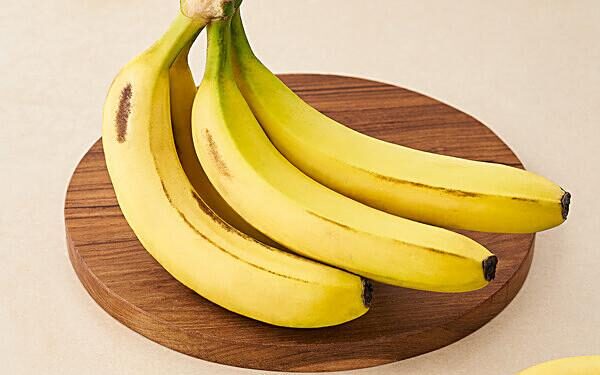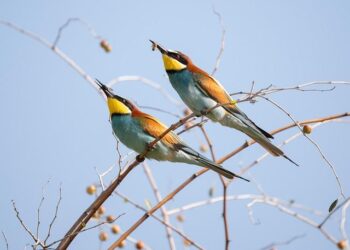Introduction:
As the impacts of climate change continue to unfold with alarming rapidity, a new study reveals a troubling threat to one of the world’s most beloved and widely consumed fruits: the banana. Research highlighted in The Guardian sheds light on how rising temperatures, shifting rainfall patterns, and increasing pest pressures are jeopardizing banana cultivation globally. This crisis could not only disrupt markets and economies reliant on this staple crop but also threaten the livelihoods of millions of farmers. As we delve into the implications of this research, we uncover the urgent need for sustainable agricultural practices and a concerted effort to safeguard one of nature’s most cherished gifts amid a changing climate.
Impact of Climate Change on Banana Production and Global Supply Chains
The ongoing climate crisis is presenting unprecedented challenges for banana production, a staple fruit that accounts for a significant portion of global agricultural output. Research indicates that rising temperatures and erratic weather patterns are drastically affecting banana yields. Noteworthy impacts include:
- Increased susceptibility to pests and diseases: Higher temperatures create favorable conditions for pests such as the banana borer and pathogens like the tropical race 4 fungal strain.
- Altered growing seasons: Changes in rainfall and temperature patterns disrupt traditional planting and harvesting times, leading to significant production declines.
- Soil degradation: Extreme weather events contribute to soil erosion, reducing fertility and the capacity to sustain banana cultivation.
The implications for global supply chains are staggering, with countries heavily reliant on banana exports facing economic vulnerability. Major producers, including Ecuador and the Philippines, are beginning to assess the risks associated with climate variability. Key points of concern involve:
- Supply shortages: Production dips could lead to decreased global supply, driving prices higher and potentially leading to market instability.
- Increased competition: Countries that adapt more rapidly to climate change may emerge as new players in banana export, reshaping existing trade dynamics.
- Investment in resilience: Supply chain stakeholders are urged to invest in climate-resilient varieties and sustainable farming practices to mitigate future risks.
Biodiversity Loss: The Silent Threat to Banana Cultivation and Ecosystems
The alarming decline in biodiversity poses a significant risk not only to natural ecosystems but also to global food security, particularly in banana cultivation. As the world’s most popular fruit, bananas depend on a delicate balance of various species for pollination, pest control, and soil health. Unfortunately, a combination of factors, including agricultural expansion, climate change, and habitat destruction, has led to a steep decline in the diversity of the species that support this crucial crop. Key contributors to biodiversity loss include:
- Intensive farming practices: Monocultures dominate banana plantations, reducing genetic diversity.
- Climate fluctuations: Rising temperatures and changing rainfall patterns disrupt habitats.
- Habitat destruction: Deforestation and land conversion threaten local flora and fauna.
The implications of biodiversity loss stretch beyond just banana yields; they affect entire ecosystems. Vital interactions among species, including those that help regulate pests and diseases, become compromised, leading to greater vulnerability for banana crops. As pest populations surge and beneficial organisms decline, the reliance on chemical pesticides increases, further exacerbating the cycle of harm. Consider the impact of biodiversity on banana cultivation illustrated below:
| Factor | Effect on Banana Cultivation |
|---|---|
| Reduced pollinators | Lower fruit set and quality |
| Fewer natural predators | Increased pest infestations |
| Soil degradation | Reduced nutrient availability |
Strategies for Mitigating Climate Risks and Ensuring Sustainable Banana Farming
In the face of a looming climate crisis that threatens banana production worldwide, farmers and stakeholders are adopting innovative strategies to mitigate these risks. One effective approach involves implementing agroforestry techniques, which promote the intercropping of banana plants with trees and other crops. This not only enhances biodiversity but also improves soil health and moisture retention, making crops more resilient to extreme weather conditions. Moreover, integrating traditional practices with modern agricultural technology can lead to improved pest and disease management. Farmers are encouraged to engage in crop rotation and diversify their plantations, helping to sustain yields amid shifting climate patterns.
Furthermore, investing in water management systems is crucial for ensuring that banana farms remain viable. Techniques such as drip irrigation and rainwater harvesting can significantly reduce water usage and protect crops during droughts. Collaboration with agricultural research institutions provides access to valuable data on climate trends and pest outbreaks, equipping farmers with essential information for better decision-making. A significant aspect of resilience is the adoption of climate-smart varieties of bananas that can better withstand changing climatic conditions. By embracing these strategies, the banana industry can foster sustainability while mitigating the impact of climate change on one of the world’s most beloved fruits.
Concluding Remarks
As the repercussions of climate change continue to reverberate across the globe, the future of the banana—a staple food for millions and one of the world’s most beloved fruits—hangs in the balance. The alarming findings highlighted in recent research serve as a stark reminder of the fragile interconnectedness of our ecosystems and food systems. With rising temperatures, unpredictable weather patterns, and the increasing prevalence of pests and diseases, the challenges facing banana cultivation are not merely agricultural; they are a pressing socioeconomic concern that threatens livelihoods and food security in many regions.
While the grim data underscores a profound urgency for action, it also calls for innovation and resilience within the agricultural sector. As researchers, farmers, and policymakers work collaboratively to adapt and safeguard this crucial crop, the hope remains that through sustainable practices and climate-smart solutions, we can preserve the beloved banana for future generations. The stakes are high, and the time to act is now, reminding us that the health of our planet—and the fruits it bears—rests in our hands.































